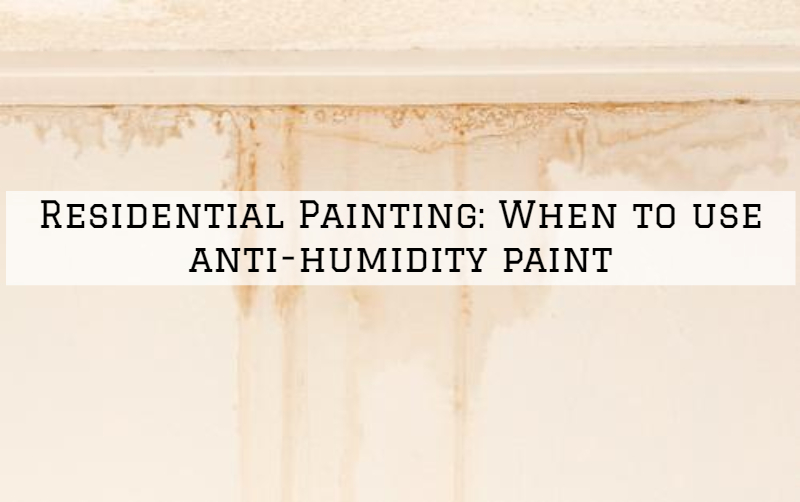Residential Painting Richmond, MI: When to use anti-humidity paint
Anti-humidity paint helps prevent moisture stains on walls, but it is not a solution for all humidity problems when doing residential painting in Richmond, MI.
In this article, we will discuss when it is recommended to apply anti-humidity paint and what you should pay attention to with such kinds of paints.
But as usual, if you’re unsure of any decision on which type of paint to use, or how to go about it, consider hiring an experienced painting contractor in Richmond, MI like Eason Painting
When To Use Anti-Humidity Paint?
This type of paint can be applied preventively to protect the walls from penetrating humidity.
It is very useful for naturally damp rooms, such as the bathroom or the kitchen.
The siding can also be treated with anti-humidity paint to prevent (or fight against) water infiltration.
What If I Already Have Humidity Problems?
Some humidity problems can be resolved by applying anti-humidity paint, but others require more treatment.
Wet walls
If you are dealing with moisture in the walls, this may be due to several reasons.
Hairline cracks in the paint, for example, is a common problem that can allow moisture to get behind the paint film.
Generally, tackle the humidity problem first before applying pain –this way, the treatment will be a definitive solution.
But in the case of minor surface moisture infiltration, applying anti-humidity paint may be enough to solve the problem.
Mold
When it comes to treating mold, anti-humidity paint can do the trick, but again, it is highly recommended that you address the underlying humidity issues first.
As you may already know, mold is often caused by excess moisture.
Therefore, treating a moisture problem can readily reduce the formation of mold. Good ventilation can also prevent these problems from appearing in the first place.
Anti-Humidity Paint For Interior and Exterior Walls
Moisture problems can occur on both interior and exterior walls. This is why there are anti-humidity paints for these two applications.
Exterior Walls: Waterproofing Paint
Applying anti-humidity paint to exterior walls can be quite helpful in preventing moisture infiltration and water staining.
Besides, this additional layer of paint also serves to protect the siding against unwelcome organic growth.
Before painting exterior walls with anti-humidity paint, the siding must be properly cleaned and prepared for better paint adhesion.
Protect Exterior Walls
The anti-humidity paint is used to protect the interior walls against penetrating humidity. Also, the paint layer masks the moisture spots on the walls in question.
This paint is especially handy in rooms where condensation typically forms, such as the kitchen and the bathroom.
Tackle Moisture Problems At Their Source!
Anti-humidity paint helps prevent certain humidity problems.
In some cases, like moisture infiltration, it can even solve existing problems.
But if you are dealing with a much bigger problem, the painting will not be enough to solve it.
As we mentioned, it’s best to fix the humidity problem first before moving on to painting. Consider repainting as a final step to solving the water stain and humidity problem.
If you need professional help dealing with water stains and humidity in your home, Eason Painting can help.
We have years of experience offering residential painting services in Macomb Township, Washington Township, Ray Township, Rochester, Rochester Hills, Romeo, Armada, Troy, Shelby Township, Harrison Township, Chesterfield, and Clinton Township, MI.
Call us today on 586-465-5081 for a FREE painting estimate.
You may also like:
Interior Painting Richmond, MI: 6 Ways to Add Color into Your Home
5 Common Interior Painting Mistakes to Avoid In Clinton Township, MI
Interior Painting Clinton Township, MI: How to Evaluate a Painting Estimate

